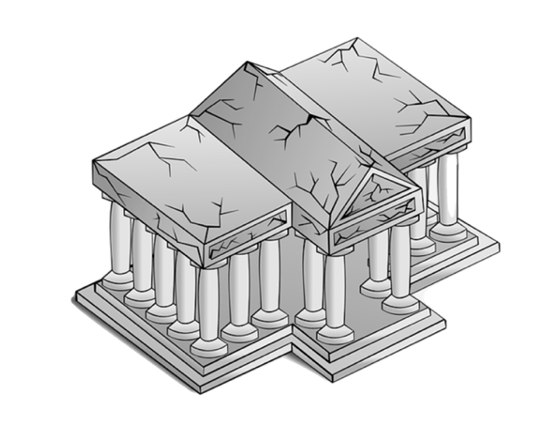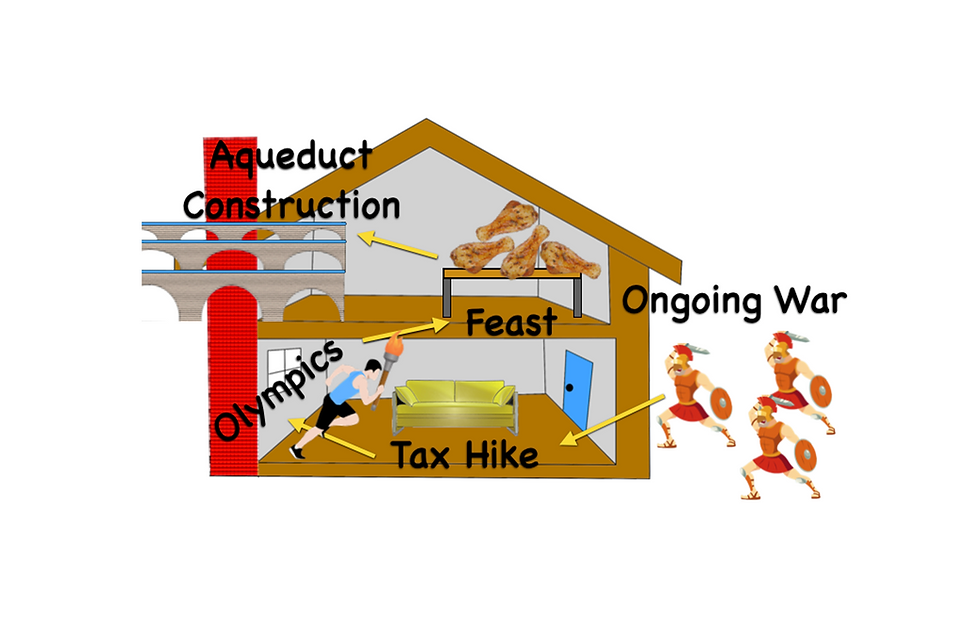Looking for effective tips on studying? The best memorization technique I’ve ever encountered came from a Greek named Simonides who lived more than two millennia ago.
Believe me, I searched high and low for tips on studying while in college. I was a college student for more than twelve years. Tommy Boy and Van Wilder have got nothing on me!
I succeeded in academics at the highest level, largely due to this ancient Greek’s advice. He created a simple learning strategy that anyone can follow.
Deconstructing the Memory Palace
The first recorded evidence of memory training is known as the memory palace, and it begins with a tragic story that goes something like this:
Around 500 BC there lived a poet in the ancient world named Simonides of Ceos. One night, he attended a dinner at the estate of a wealthy nobleman. Building codes during Greek times weren’t quite up to our current standards, however, and during the dinner party, the entire structure collapsed. Every unfortunate partygoer inside the building was crushed beyond recognition. Fortunately, our pal Simonides was lucky enough to have stepped outside just prior to the disaster and stood as the sole survivor.

After the catastrophe, the authorities were in desperate need for help identifying the deceased. The gathering had been rather large, and immediately following the incident it was difficult to remember all who had been in attendance at the tragic party.
The Birth of the Memory loci
It was only after Simonides had associated the partygoers with different loci, or locations within the house, that he could remember them all. Simonides pictured in his mind what the original outlay of the house had looked like, as well as where each guest was located before the collapse.
The different rooms within the house acted like filing cabinets and held enough information to account for every house guest. By engaging in a mental journey, Simonides could remember the location of each guest within the house, and thus he could identify the remains of the deceased.
Simonides was quite clever, and he soon realized that his technique could be applied to any type of information. Simonides continued to work on his memory technique, a method now known as the memory palace.
He found that he could remember nearly any tidbit by turning the information into images and mentally placing the material inside local architecture. If he could imagine people within well-known building interiors, why not place other information there—like cue reminders for an important speech?
How to Memorize Speeches
Let’s say the Greek was preparing a speech to cover five main points: the ongoing war, new taxes, the upcoming Olympic games, the feast to follow, and last of all, construction progress on the new aqueduct.
The speech begins with war, so he imagines an army of Greek solders ramming down his front door. Inside the house, his furniture shimmers like gold (tax hike), and a sprinter runs circles around his couch with a torch (Olympics). A wave of grub piles up on the kitchen counter (feast) while an aqueduct blasts through the chimney.

Every point of the speech can be recalled by traveling along a path through the house. Different locations function to store different speeches and information.
These Techniques Caught On
Simonides's techniques caught on and have been used throughout history by kings, scholars, and saints. Memory champions continue to harness his techniques today to memorize a wide range of material—from literature to numbers to decks of cards.
This timeless method only requires a few steps to accomplish.
Step 1
Turn your information into pictures. For more insights on creating picture-based memory cues, check out the article Top Study Tips.
Step 2
Choose a physical location to place the picture reminder. Then, place your pictures along the chosen mental journey. Each piece of new information needs a unique location. For additional study tips on how to link information with physical locations, check out How to Supercharge Your Memory in Seconds.
Step 3
Practice visualizing the mental journey with the picture reminders in place. Take the same mental pathway through the building or location each time to stay organized and avoid confusion.
If You Reuse It, You Lose It
Each location is like a single-use recordable tape. Reusing a location is like taping over an old VHS: You gain new material at the expense and sacrifice of the old.
For this reason, each house, building, or location should only be used once to store important information. When locations are recycled, material is lost. On the plus side, most of us have detailed memories of hundreds, if not thousands, of locations, including houses, stores, office buildings, schools, churches, parks, stadiums, driving routes, hikes, and neighborhoods.
But This Technique May Not Be Enough
In order to recall enough information to pass an average class, physical locations will often suffice. We have plenty of them already tucked away.
But what if we want to memorize more than one class? Or pi to the 1,000th digit? (For more on long numbers, click here.) Accomplishing this will require far more space.
Storage space is the number-one issue that plagued me during medical school. If I combined every physical location I had ever visited, I created just enough room to house one class at a time.
I was continually deleting old information to make way for the new. I had become only as smart as my last class.
Movies, TV Shows, and Video Games Can Provide a Huge Boost
I eventually pieced together a system to expand my resources. I figured out that the virtual environments within my favorite movies, TV shows, and video games could be turned into mental filing cabinets in the exact same manner. With the help of my favorite entertainment, I was able to memorize the entirety of my medical education.
To learn more about how your favorite entertainment can help in school, click here.
Comments